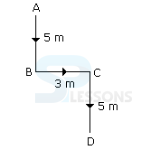 Introduction
Introduction
Scheme of Main Examination for recruitment to the post of Assistant Administrative Officers (AAOs) - IT/ Chartered Accountant/ Actuarial in LIC is as follows:
- Main examination will consist of objective tests for 300 marks and descriptive test for 25 marks.
- Both the objective and descriptive tests will be online.
- The objective test will have separate timing for every section.
- Candidates will have to answer descriptive test by typing on the computer.
- Descriptive test will be administered immediately after the completion of the objective test.
 Pattern
Pattern
| Name of the tests | Number of Questions | Maximum Marks | Medium of Exam | Minimum Qualifying Marks | Duration | |
|---|---|---|---|---|---|---|
| SC/ST | Others | |||||
| Reasoning Ability | 30 | 90 | English & Hindi | 40 | 45 | 40 minutes |
| General Knowledge, Current Affairs | 30 | 60 | English & Hindi | 27 | 30 | 20 minutes |
| Professional knowledge | 30 | 90 | English & Hindi | 40 | 45 | 40 minutes |
| Insurance and Financial Market Awareness | 30 | 60 | English & Hindi | 27 | 30 | 20 minutes |
| Total | 120 | 300 | 2 hour | English Language (Letter writing & Essay) | 2 | 25 | English | 9 | 10 | 30 minutes |
- English Language test will be of qualifying nature and the marks in English Language will not be counted for ranking.
 Syllabus
Syllabus
[Click Here] for LIC AAO IT/ Chartered Accountant/ Actuarial Reasoning Ability Syllabus.
 Samples
Samples
Number Series
Direction (1 - 5): In following question, a number series is given with one term missing. Choose the correct alternative that will same pattern and fill in the blank spaces.
1. 165, 195, 255, 285, 345,
- A. 375
B. 420
C. 435
D. 390
- A. 41
B. 51
C. 60
D. 71
- A. 115
B. 148
C. 170
D. 181
- A. 550
B. 310
C. 295
D. 285
- A. 246
B. 247
C. 248
D. 249
- A. ATSSTS
B. EQDDYD
C. ESDDYD
D. EQDDZD
- A. SQBHOHOF
B. UQBHOIOF
C. UQBHOHOI
D. UQBHOHOF
- A. CPNCBZ
B. CPNCBX
C. DPNCBZ
D. DPNCBX
- A. EJTQPTF
B. EJTQPTG
C. CHRPNRD
D. CHRONRD
- A. RYPQJG
B. RCPQJG
C. NCPQJG
D. NCPQJC
- A. 1
B. 2
C. 3
D. 4
E. 5
- A. 1
B. 2
C. 3
D. 4
E. 5
- A. 1
B. 2
C. 3
D. 4
E. 5
- A. 1
B. 2
C. 3
D. 4
E. 5
- A. 1
B. 2
C. 3
D. 4
E. 5
- A. 19
B. 21
C. 22
D. They will not call out the same number
E. None of these
- A. 1
B. 4
C. 7
D. 8
E. None of these
- A. 4
B. 5
C. 6
D. 7
- A. Wait
B. Sit
C. Go
D. Stop
E. Run
- A. 18
B. 21
C. 24
D. 27
E. 30
- A. PIG
B. PET
C. PUT
D. POT
- A. E/12, F/14
B. E/10, F/12
C. D/10, E/10
D. E/8, F/10
- A. LKPO
B. ABYZ
C. J1RQ
D. LMRS
- A. S-48
B. M-96
C. L-96
D. O-48
- A. select
B. dirty
C. dummy
D. flush
- A. West
B. South
C. South-West
D. South-East
- A. North-East
B. South
C. North
D. South-West
- A. North
B. South
C. East
D. West
- A. North
B. South
C. East
D. West
- A. East
B. South
C. West
D. Data is inadequate
- A. Walk
B. Play
C. Speak
D. Dance
- A. Seed
B. Taste
C. Flower
D. Twig
- A. Manuscripts
B. Metals
C. Speech
D. Charter
- A. Ground
B. House
C. Roof
D. Smoke
- A. Earthquake
B. Storm
C. Flood
D. Downpour
- A. 8
B. 18
C. 9
D. 10
- A. 188 million
B. 166 2/3 million
C. 192 3/4 million
D. None
- A. 12 & 7
B. 13 & 8
C. 15 & 10
D. 14 & 9
- A. 1
B. 2
C. 3
D. 4
- A. Thumb
B. Index finger
C. Ring finger
D. Middle finger
- A. 14
B. 16
C. 18
D. 24
E. None of these
- A. Sister
B. Mother-in-Law
C. Mother
D. Step-mother
E. None of these
- A. R and P
B. P and T
C. Q and T
D. S and T
E. None of these
- A. Brother
B. Uncle
C. Father-in-law
D. Brother-in-law
E. None of these
- A. Father
B. Sister
C. Mother
D. Aunt
- A. Dodge the policeman
B. Stop and pay time
C. Stop and reason it out with about the policeman
D. Stop and use references
E. None of these
- A. Explore the reason of inappropriate performance and report to the higher authorities.
B. Start an incentive mechanism for better Performance.
C. Create an organizational culture in which the employees feel to be concerned
D. Implement special Human resource training for the employees
E. None of these
- A. Give a bribe.
B. Behaves as, If you have not understood the feelers and persist with your application.
C. Go to the higher officer for help and verbally complaining about feelers.
D. Send in a format complaint
- A. Ask the media people to come some other day
B. Immediately accept the offer and brief them
C. Get them turned out of your office
D. Ask them to wait and to consult the officials concerned
- A. Ask some one to arrange on umbrella
B. Stop your address for a while
C. Continue the address without bothering the rain
D. Postpone it for day
- A. 1
B. 2
C. 3
D. 4
- A. 1
B. 2
C. 3
D. 4
- A. 1
B. 2
C. 3
D. 4
- A. 1
B. 2
C. 3
D. 4
- A. 1
B. 2
C. 3
D. 4
- A. 700
B. 800
C. 1200
D. 2000
- A. Monday
B. Tuesday
C. Wednesday
D. Sunday
- A. Monday
B. Wednesday
C. Thursday
D. Sunday
- A. 22
B. 24
C. 44
D. 48
- A. 20
B. 22
C. 24
D. 48
- A. 1 only
B. 2 only
C. 1 and 3 only
D. 1, 2, 3 and 4 only
- A. 1 only
B. 2 only
C. 3 only
D. 4 only
- A. 1 only
B. 2 only
C. 3 only
D. 4 only
- A. 2 and 3 only
B. 1, 3 and 4 only
C. 2 and 4 only
D. 1 and 4 only
- A. 1 and 2 only
B. 2, 3 and 4 only
C. 4 only
D. 3 and 4 only
























